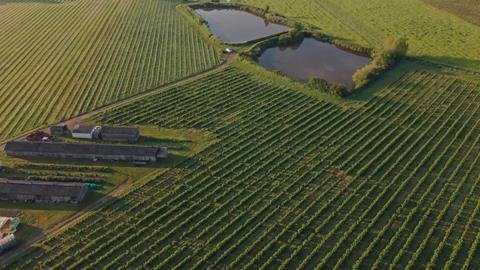Technology is being used to analyse the presence of threatened bird species
Ribena manufacturer Suntory Beverage & Food GB&I (SBF GB&I) is leveraging artificial intelligence to reveal a story of biodiversity across a number of its blackcurrant farms this harvest season.
The project – in partnership with the Farming and Wildlife Advisory Group (FWAG) South West – reveals the presence of a range of threatened bird species across hedgerows, woodland and grasslands.
Analysing the birdsong across these blackcurrant farms, the project aims to demonstrate how farm stewardship can go hand in hand with wildlife protection as part of SBF GB&I’s broader commitment to improving biodiversity and supporting its growers as they respond to climate change.
Adopting technology
The project uses AI analysis and recording technology in various habitats on five farms to collect quantitative data on key species over an average period of 48 days across the year. On average, each farm boasted 58 different species, with the most diverse farm hosting 63 species.
While recordings are generally dominated by the more common and vocal species such as the wren, robin, and dunnock, SBF GB&I says the bioacoustic recorders can pick up the more elusive or unusual species that may be harder to capture, giving a fuller picture of the habitats.
Among the 83 species recorded were 15 UK red list birds and 17 from the amber list, including priority species such as the bullfinch, and the skylark, whose recent and dramatic decline – down by 63 per cent since 1967 – has led to the species landing on the red list.
Going beyond traditional methods
Fraser McIntosh, head of external affairs and sustainability at SBF GB&I, said: “Every harvest season underlines what a privilege it is to work with our incredible blackcurrant growers. Visits to the farms are a joy and even more so when we get to see the impact of projects like these.
“We’ve had biodiversity action plans in place on these farms since 2004, so seeing how we’re providing safe havens for such a variety of bird species really validates the hard work from our growers and our team over many years. This work is so important to boost biodiversity and ensure the resilience of the blackcurrant crop for future generations, all part of what we call Growing for Good.”
Olly Edmonds, farm environment adviser at FWAG, added: “Working with SBF GB&I has enabled us to harness AI technology for deeper monitoring across the farms. This method allows us to observe a larger area for extended periods, beyond what might be possible using traditional approaches.
“We’ve strategically placed recorders to get a broader baseline of species across the farms and to help provide an insight into species presence within different habitats including those supported by conservation efforts.
“”For example, species reliant on hedgerows such as dunnock and bullfinch may be being supported by the sympathetic hedgerow management under the Farm Stewardship Scheme. We’re optimistic that ongoing monitoring will help reveal the contribution of these efforts on nurturing a robust bird community on our blackcurrant farms.”
’Six Point Plan’
The bioacoustic monitoring initiative builds upon SBF GB&I’s Farm Stewardship Scheme, a programme implemented in partnership with FWAG South West. This scheme, which covers 34 growers across Great Britain, has consistently delivered environmental improvements to blackcurrant farms through its ‘Six Point Plan’ (6PP), according to the drinks manufacturer.
The 6PP enhances key farmland habitats and species protection by focusing on hedgerows, grass buffers, green headlands, farmland birds, pollen and nectar sources, and mature trees. The approach aims to create more resilient farms in the face of climate change and extreme weather, while aligning with national environmental policies.




